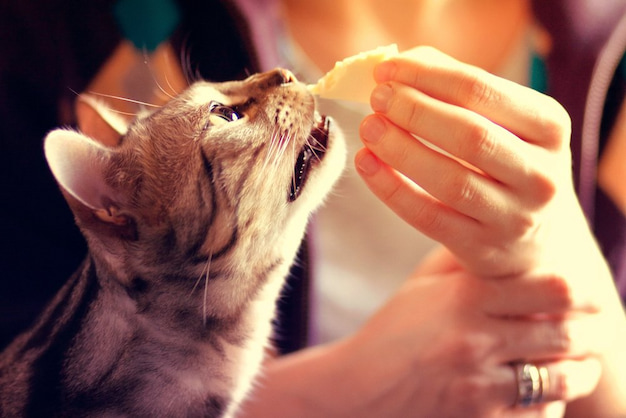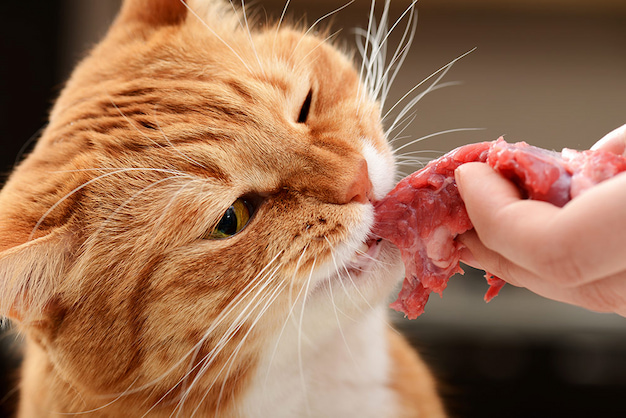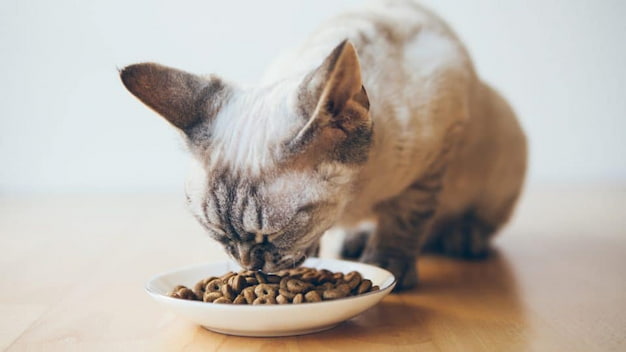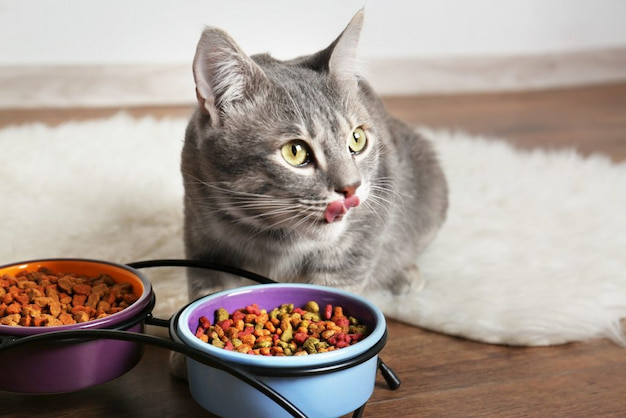Feeding Your Feline Friend: The Importance of Understanding Cat Nutrition
If you’re the proud owner of a furball, then by now you probably know that cats are independent animals and they could easily survive outdoors if they must (meaning, they would hunt birds or smaller prey without any problem). But, no matter how self-sufficient these little purring machines can be, they still turn to their owners first when it comes to food.
When welcoming your kitty, you probably acquired all the necessary stuff including food. However, your cat is all grown up now and you’re considering switching up her food. First of all, if your furry friend eats the same food for every meal, it doesn’t mean that you’re doing something wrong, but you should ask your vet if you could incorporate some other things to improve your cat’s diet. Providing your pet with a special diet cat food is a great way to keep her weight regulated, but also ensure a healthy life and extended lifespan. Now before you stand in front of the aisle with dietary cat food, here are a few things to consider.

Choose Only Certified Foods
Be careful when choosing your cat’s food. Make sure to check the ingredients and if it is recommended by the Australian Veterinary Association. Food with this label are confirmed to have complete and balanced nutrition and you can expect that your pet gets all the necessary nutrients. So, unless your vet doesn’t recommend extra supplements, you won’t have to give your cat anything else besides the cat food.
Only a Meat-Based Diet Will Do
Keep in mind that your cat is a carnivore, which means that by no means they can eat a plant-based diet (even if you are a vegan or a vegetarian, please don’t change your cat’s diet for that matter). Your cat requires a meat diet that has enough taurine which is an amino acid and other necessary nutrients. Even though your cat will probably be annoying and ask for people food, make sure to stick to its food since it is rich in the nutrients it needs.

What Is Quality Cat Food Made Of?
If you read the label of dietary cat food vets recommend, you’ll see that it mainly consists of water, proteins, fats, carbs, vitamins and minerals. Proteins are necessary for building blocks of cells, organs and tissues and they are either animal or plant-based. Proteins that come from soy, vegetables and cereal are plant-based, while proteins that come from meats like chicken, lamb, fish or turkey are animal-based. Cat food often contains byproducts of animals or plants, the parts that people don’t usually eat.
In addition, animal-based proteins also include complete amino acids, such as taurine, arginine, cysteine, and methionine which are essential for cats whose bodies don’t synthesize them in adequate amounts. Carbs will give energy, but cats don’t use them as an energy source. Cats’ bodies are designed for a steady release of glucose from protein. The most concentrated form of energy, fats in cat food help with the absorption of fat-soluble vitamins and give necessary fatty acids (omega-6 and omega-3) that cats can’t synthesize well. Make sure your cat gets food rich in vitamins such as A, B, D, E, and K, as well as minerals, such as calcium and phosphorus.
Dry or Canned Cat Food?
There is a dilemma for this, but if you invest in high quality, any of these foods will work well. However, cats do benefit from wet food and most vets will tell you that wet food has larger chunks of meat, therefore your cat will get more of every nutrient. Dry food nutrients come more from plants, while wet food is more focused on animal-based proteins. You can make a combination of the two and your cat will love it. For instance, you can give your cat one portion of wet food per day, and use the dry food as treat.

Tips for Feeding Your Cat
Cats love food and if you’re a cat owner you know this. If you’re about to adopt or get a new cat, make sure to place the cat’s bowl in a place it won’t be disturbed, so the animal can relax when eating. In case there are more cats or dogs in your home, make sure everyone has their spots. For picky eaters, make sure to offer a variety of food; dry and wet food is a good choice to see what the cat prefers and then stick with it.
Dry food can remain in the bowl indefinitely (unless your pet is too greedy and you know it will overeat). If the weight isn’t an issue, the dry food can stay in the bowl. Some owners like to set a schedule; most adult cats eat twice a day. However, cats are very manipulative and will try to trick you into giving them food or treats more than once. If you can resist their sad meowing and big eyes, you can do anything. Canned food isn’t recommended to stay in the bowl all day long like dry food. It will dry out and won’t be so good for eating.

Finally, make sure not to overfeed your cat, especially if weight is an issue. Overfeeding can easily lead to obesity, heart issues and arthritis. Also, watch for appetite loss. Sometimes cats may refuse to eat and may appear lethargic. If this is the case with your cat, it’s best to take it to your vet.


